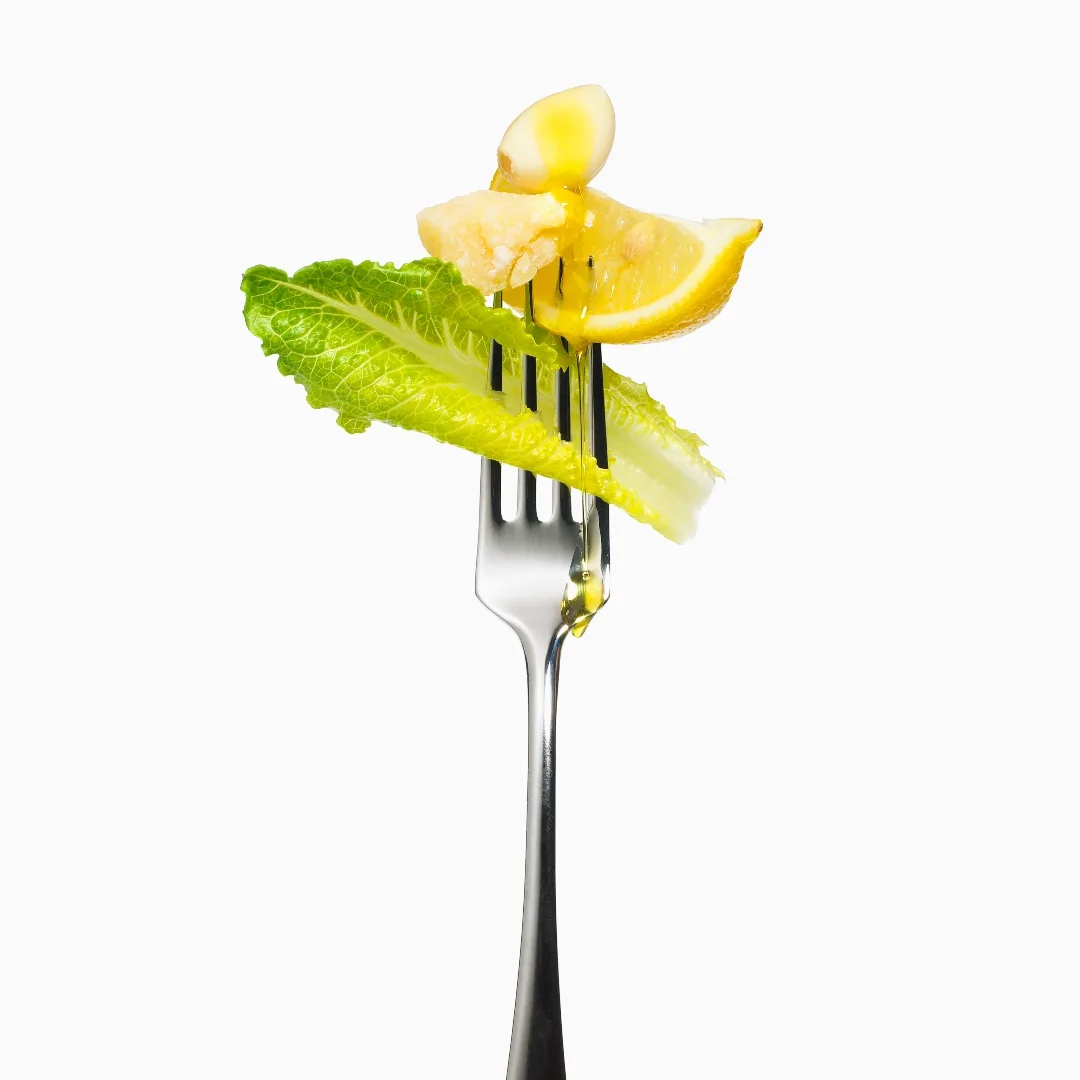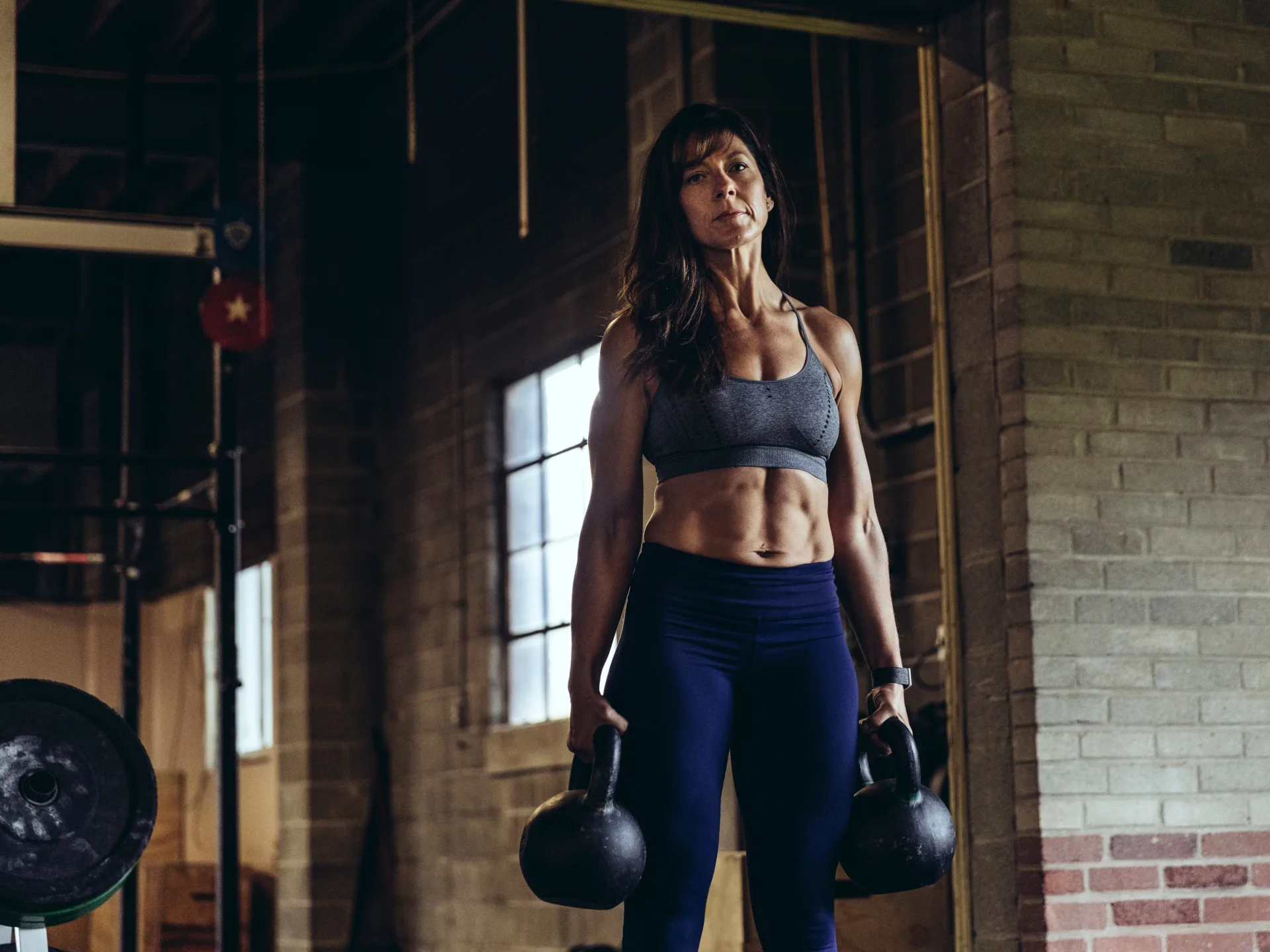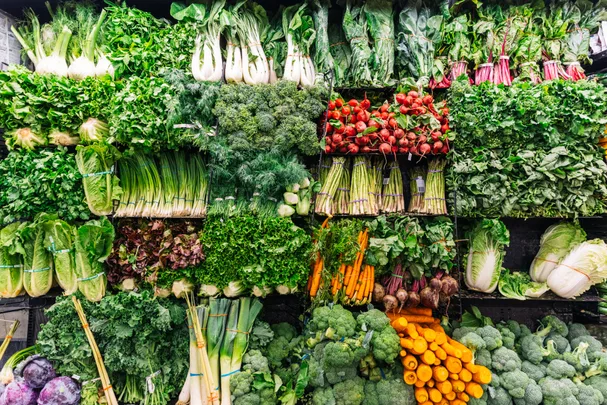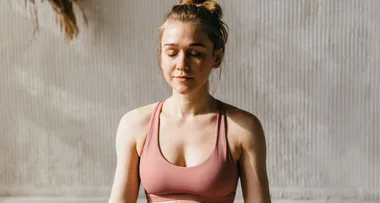It was as she was standing in her kitchen crying over a sweet potato that Zoe Janda first began to suspect something was very wrong. For months, the 27-year-old had been following a strict diet and exercise regime in preparation for a bodybuilding competition. She had a coach tell her what to eat. She went to the gym seven days a week, morning and night. Bodybuilding became an obsession, then an identity.
So, the day after the competition, as she stood in her kitchen making lunch, Janda was suddenly struck with the realisation she didn’t need to follow a strict regime any more – the competition was done and dusted. Yet instead of freedom, she felt trapped.
“I wasn’t sure if I was ‘allowed’ to eat the sweet potato or not. That was my first red flag,” Janda, now 37, tells marie claire. “Bodybuilding was all I was focused on and when that was gone, it was just me by myself. That was my starting point. The competition was the catalyst for orthorexia.”

Orthorexia nervosa, a term coined in 1997 by American physician Steven Bratman, involves an obsession with healthy or “clean” eating. Those living with orthorexia will often fixate on food “purity” and quality but not necessarily the quantity of food.
“People diagnosed with orthorexia will subscribe to a range of rules that are often based on a narrow definition of health, and this may be driven by a variety of reasons,” explains Sarah McMahon, psychologist and director of BodyMatters Australasia.
“For example, avoiding supposed allergens or ‘intolerances’ [to things] such as gluten or lactose – when there is no medical advice to do so – or restricting processed food in an attempt to avoid dying. One primary difference between orthorexia and other eating disorders is that there is a focus on being ‘healthy’, rather than weight or shape concerns.”
Since orthorexia is not officially recognised as an eating disorder in professional reference guide The Diagnostic and Statistical Manual of Mental Disorders, Fifth Edition, it is often referred to as disordered eating. Disordered eating is defined as a wide range of irregular eating behaviours that do not warrant a diagnosis of a specific eating disorder. The five clinically recognised eating disorders are: binge-eating, bulimia, anorexia, avoidant/restrictive food intake disorder (ARFID) and other specified feeding and eating disorder (OSFED).
However, according to Sarah Cox, psychologist and national helpline manager of eating disorder and body-image charity the Butterfly Foundation, there is growing recognition that orthorexia may be a distinct eating disorder and is a serious mental health condition that can cause extreme health complications.

“As part of their orthorexia behaviours, someone may cut out essential nutrients or whole food groups, which can lead to a risk of malnutrition, including serious side effects such as reduced cognitive functioning, impaired immune system, organ failure, kidney issues and cardiovascular issues,” says Cox. “In addition, like other eating disorders, it can result in significant and serious consequences for a person’s psychological, social and workplace functioning.”
It would take another four years after the “sweet potato” incident for Janda to start on her road to recovery. By then it was 2018, and it was only after visiting her GP that she discovered she had been living with orthorexia for years. “From the age of 27 right through to the age of 32 I did not have a regular period,” says the Queenslander. “So I went to the GP for a blood test.”
What Janda didn’t know is that period loss is one of the biggest signs of orthorexia and other eating disorders, and a result of extreme weight loss and starvation, coupled with stress and anxiety. She worried about food so much that she recalls packing more pre-made meals than clothing on a three-day work trip interstate.
Social isolation is another sign. Many people living with orthorexia stop going out with friends and family because they become anxious about eating at restaurants and cafes. “A core memory for me is that I did not celebrate on my 30th birthday. I stayed at home; I ate my prepared meal,” recalls Janda. “My best friend popped over to see me but I didn’t even go out for a meal with her because I was so focused on food … I’ll never get my 30th birthday back.”
According to the Butterfly Foundation, the rise in orthorexia in recent years can be attributed to a number of factors. “Healthy eating, dieting and a weight-centred approach are often the focus of public health campaigns,” says Cox. “But these [tend to] perpetuate weight stigma, showcase a lack of understanding of weight science, apply dichotomous thinking to food – framing food as ‘healthy or ‘unhealthy’ – and feature an over-reliance on population health measures such as Body Mass Index. This is also replicated within nutrition education and messaging in schools.”
While the prevalence of social media may also play a part in developing orthorexia, it’s important to note that social media alone does not cause eating disorders. In saying that, social media has allowed the proliferation of harmful beauty and body ideals, fat phobia, diet culture and misinformation surrounding health and wellness, including the recent phenomenon of “clean eating”, which has given licence for orthorexia behaviours to be encouraged and celebrated.
“Social media is forever telling us we need to do more, be more and achieve more, when in reality it’s the opposite,” says dietitian Lyndi Cohen (aka The Nude Nutritionist), who has lived experience with binge-eating. “You don’t have to spend 95 per cent of your day thinking and agonising about food. The less you complicate it, the better. But the constant conflicting messages and noise on social media make us feel like we aren’t doing enough for our health.”
Social media certainly had a big part to play in Sally O’Neil’s lived experience with orthorexia. The clinical nutritionist (who goes by The Fit Foodie on Instagram) developed the disordered eating condition 10 years ago when she was 27. Back then, she was documenting her weight-loss journey on Instagram and received constant validation from her followers. “I took it too far. I became really obsessive,” O’Neil tells us.

She was initially diagnosed with anorexia by a GP, a diagnosis O’Neil rejected because she wasn’t displaying traditional anorexia presentation (such as hiding her food). O’Neil was eating vast quantities of food, in fact, but it was “all iceberg lettuce with a bit of vinegar”. She also wasn’t obsessing over body image or aesthetics. She knew she looked ill, but at the same time thought eating “healthy” food would make her healthier.
A second GP encouraged O’Neil to see a psychologist for a proper diagnosis, and this was where she learnt she had orthorexia. O’Neil credits both her psychologist and the Butterfly Foundation with helping her on her recovery journey.
Crucially, O’Neil pivoted her social media messages to help others find balance too. “I’d like to think I’ve turned my social media into a very big silver lining for myself,” she says. “I’ve built
businesses off the back of it in a really healthy way. The work I do now as a registered nutritionist will often crossover to people or clients who have signs of orthorexia or have an eating disorder, and I can genuinely empathise with the thought process. It has definitely made me a better practitioner.”
Statistics show approximately one million Australians (four per cent of the population) are living with an eating disorder in any given year and approximately nine per cent of Australians will experience an eating disorder at some point in their life. While eating disorders and disordered eating do not discriminate and can occur in people of any age, weight, gender identity, sexuality or cultural background, studies show women and girls are more likely to experience all types of eating disorders than men and boys, with the exception of binge-eating, where the gender distribution is equal.
In Australia, 63 per cent of people with eating disorders are female and 37 per cent are male. It is estimated that 15 per cent of all women will experience an eating disorder or disordered eating
in their lifetime.
One such woman is 26-year-old Sophie Smith. While the West Australian had grown up with a healthy body image and a healthy relationship with food, something changed when she turned 15. It was then that she noticed she was putting on weight and wasn’t getting any taller. Suddenly, being weighed in PE classes once a term at her all-girls school became a terrifying ordeal.
“I didn’t want to be perceived as unhealthy, or all the negative connotations we have with people in larger bodies. It cemented a fear in my mind,” Smith, who is now an advocate for those with eating disorders, tells marie claire. “That’s what initially led me to do a bit of a ‘health kick’. It started off relatively harmlessly with good intentions to do some more exercise and eat a bit healthier and lose some weight. But I had all the vulnerabilities and predisposing factors for it not to just end there.”
McMahon (from BodyMatters) notes the start of dieting in teen years – fuelled by diet culture and the “thin ideal” and the assumption that being thin equals being healthy – is very common. “Developmentally, teenagehood is a time where people begin to have more choices around food that aligns with increased independence from family,” she says. “Further, this is a time where people may be considering what their values are, such as environmental concerns, which might impact food choices.”

Women and girls are exposed to unique societal and cultural messaging regarding their appearance. The pressure to maintain a normative feminine body has been shown as a leading cause of the development of a variety of mental health complications for women, including eating disorders.
Initially, friends and family were supportive of Smith’s “health kick” and complimented her willpower and discipline – and her weight loss.
As time went on, Smith began to withdraw socially due to anxiety around food. She noticed physical changes as well: her hair began thinning, her nails were weak and brittle, and she was cold most of the time. Since she was on the pill to help control her acne, she didn’t realise until she came off of it that her periods had stopped.
By the time Smith was coming to the realisation her relationship with food was not as healthy as she thought, she was 20. At this same time, her twin sister was taking a nutrition course. This ultimately led to Smith meeting the nutritionist lecturer, who also had lived experience with an eating disorder, and then a psychologist, which in turn paved the way for an orthorexia diagnosis and recovery.
“My sister and I both came around to the idea at the same time that something was going on,” says Smith. “That was good because I think before that I would have been very resistant to anything being wrong or I would have been very defensive. I would have really struggled if I’d felt pressured into recovery or into the idea of, ‘this is an eating disorder’ by family or friends. My definition of health has changed so much since I was 15.
“It’s ironic that my rigid pursuit of physical health ended up harming my mental and spiritual health. Essentially, I came to realise that if this is what it takes to be ‘healthy’, it’s just too high
a price to pay.”
If you’re impacted by an eating disorder or body image concern, or know someone who is, contact Butterfly’s national helpline on 1800 33 4673, via webchat or email support@butterfly.org.au. Counsellors are available seven days a week, 8am-midnight (AEDT).

